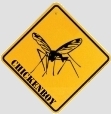Lowpe
Posts: 22133
Joined: 2/25/2013
Status: offline

|
quote:
ORIGINAL: John 3rd
How do you mean? Can you give examples?
Thanks for the help gang! Maybe we can all learn something for future use.
Air bombardments and Naval bombardments are different, first naval:
There are a lot of variables, but if you are being pounded by large multiple task forces and have many units in the base then in general:
Any coastal defense units get targeted first, or effectively first.
Then, the largest infantry AV units get shredded. So if you have 3 divisions present they will all take a pasting, but if you have 1 division and break the other two divisions down into thirds, well then they will come thru in good shape.
So you can rotate the damage by combining and splintering full divisions day by day.
Artillery will get hit, AA hit, etc., and the more units you have to spread the shelling really helps. Even pitiful 20mm AA guns act as damage soaks and are very important.
Armor is targeted absolutely last, no matter how big the unit. Most times never suffering any damage at all.
I was unable to see any protection from naval shelling by being in reserve no pursuit mode except for coastal defense guns. If disruption gets very high, or disablements on the guns, go ahead and stick them in reserve no pursuit for a few days.
Flying LRCAP with NF over the base down low, around 6K, you can occassionally knock the float plane spotters down. Big boon that.
Having a naval attack squadron flying at night helps lessen the impact of naval bombardments, as the ships won't fire as much if they have been attacked by planes. This holds true for ships too.
Forts and terrain and weather and moonlight and dl all effect shore bombardments.
The nastiest naval bombardments come from amphibious landings, even just supply. There is a differnet targeting priority there and the ships really fire off the ammunition. Much harder to defend against. One APD unloading supply in a BB/CA heavy amphibious group is a definite game exploit.
|
 Printable Version
Printable Version


















 New Messages
New Messages No New Messages
No New Messages Hot Topic w/ New Messages
Hot Topic w/ New Messages Hot Topic w/o New Messages
Hot Topic w/o New Messages Locked w/ New Messages
Locked w/ New Messages Locked w/o New Messages
Locked w/o New Messages Post New Thread
Post New Thread